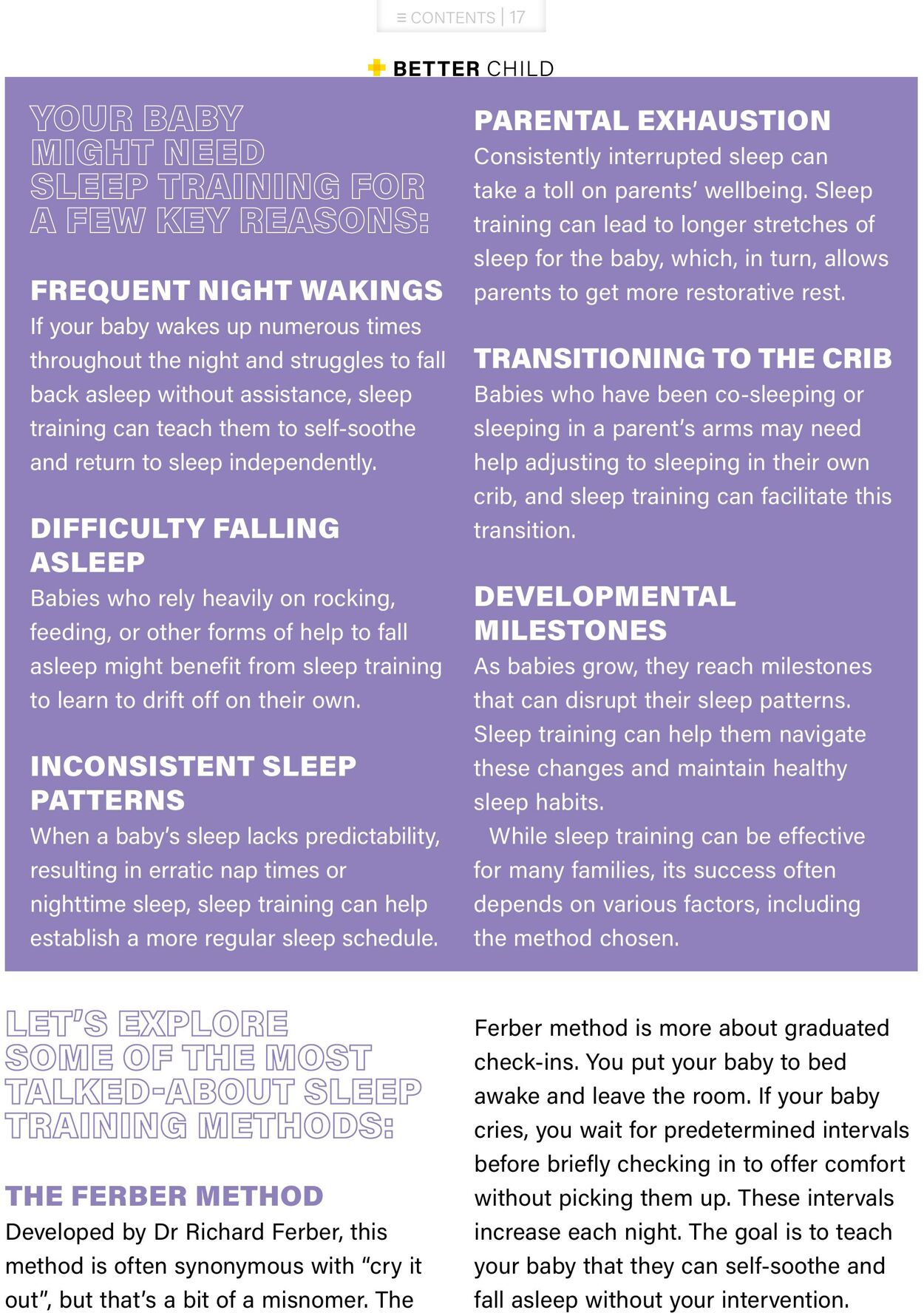













Products in this catalogue
CONTENTS | 17 BETTER CHILD YOUR BABY MIGHT NEED SLEEP TRAINING FOR A PEW KEY REASONS: FREQUENT NIGHT WAKINGS If your baby wakes up numerous times throughout the night and struggles to fall back asleep without assistance, sleep training can teach them to self-soothe and return to sleep independently. DIFFICULTY FALLING nwa Babies who rely heavily on rocking, feeding, or other forms of help to fall asleep might benefit from sleep training to learn to drift off on their own. INCONSISTENT SLEEP PATTERNS When a baby’s sleep lacks predictability, resulting in erratic nap times or nighttime sleep, sleep training can help establish a more regular sleep schedule. LETS EXPLORE SOME OF THE MOST TALKED-ABOUT SLEEP TRAINING METHODS: THE FERBER METHOD Developed by Dr Richard Ferber, this method is often synonymous with “cry it out”, but that’s a bit of a misnomer. The PARENTAL EXHAUSTION Consistently interrupted sleep can take a toll on parents’ wellbeing. Sleep training can lead to longer stretches of sleep for the baby, which, in turn, allows parents to get more restorative rest. TRANSITIONING TO THE CRIB Babies who have been co-sleeping or sleeping in a parent’s arms may need help adjusting to sleeping in their own crib, and sleep training can facilitate this transition. DEVELOPMENTAL MILESTONES As babies grow, they reach milestones that can disrupt their sleep patterns. Sleep training can help them navigate these changes and maintain healthy sleep habits. While sleep training can be effective for many families, its success often depends on various factors, including the method chosen. Ferber method is more about graduated check-ins. You put your baby to bed awake and leave the room. If your baby cries, you wait for predetermined intervals before briefly checking in to offer comfort without picking them up. These intervals increase each night. The goal is to teach your baby that they can self-soothe and fall asleep without your intervention.
| Name | Details |
|---|